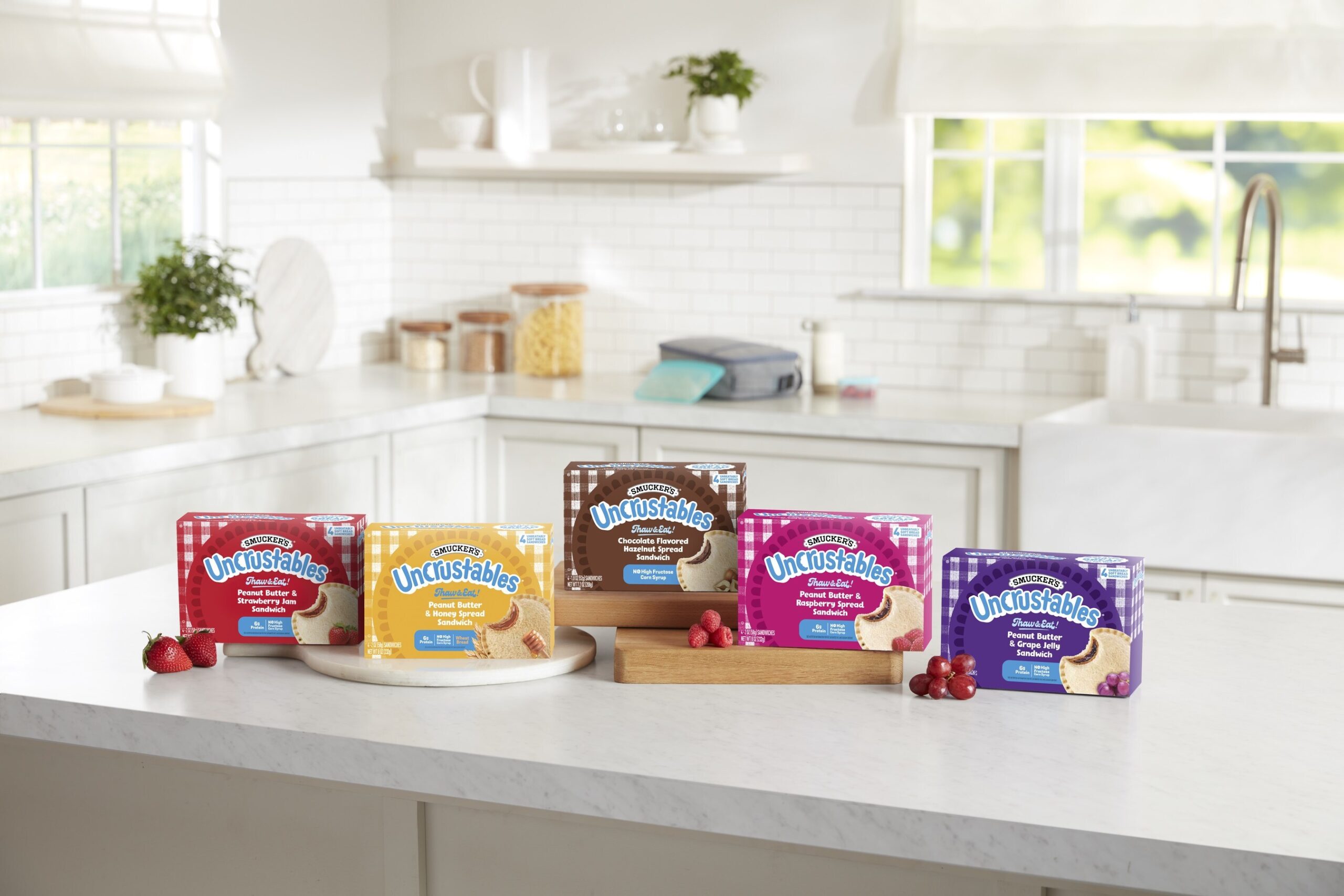Once a quick meal for picky eaters, Uncrustables have become a top grab-and-go pick for NFL players.
The sandwiches’ love affair with American football players actually began before their commercial debut, as they were invented by a former North Dakota State wide receiver, Len Kretchman, and his wife, Emily.
The idea was simple, sure – but isn’t that a good thing when developing convenience products?
The couple kicked off their kitchen experiments with a loaf of bread, jar of peanut butter, and jar of jelly. Len remembers it all happening like this: “It was two people standing there, goofing off, probably having a beer or a glass of wine, and saying, ‘What do you think of this?’”
A Bit of a Jam
So, how did the crustless sandwich get its iconic round shape? The inspiration was, quite literally, out of this world.
“The moon is round, the sun is round, the Earth is round, it’s our favorite shape,” Len told The Athletic.
The only problem? When they thawed the first round, the jelly seeped through the bread – and no one likes a soggy sandwich.
The solution came in the form of another key ingredient, peanut butter, which they used to encase the jelly.
An Unconventional Focus Group
Len leveraged his role in school foodservice for the Uncrustable’s first round of testing.
In fact, the name itself came from the 11-year-old son of a business associate, and the initial iteration, “The Incredible Uncrustable,” was equally apt for a superhero.
But despite its fun nature, the original name was also quite a mouthful, so Smucker’s shortened it to just “Uncrustable” after acquiring the brand in 1999.
So, how did the product eventually infiltrate the NFL?
The Unsung Hero of NFL Nutrition
The Athletic uncovered the league’s undying love for the prepackaged PB&J while working on another story.
Eventually, it came to light that NFL teams were consuming anywhere from 3,600 to 4,300 Uncrustables per week, amounting to at least 80,000 a year when you factor in the training camps and teams that didn’t provide their stats.
It’s hard to pinpoint precisely when the humble sandwich began appearing in locker rooms; however, it wasn’t there when Dallas Clark joined the Indianapolis Colts in 2003.
Clark remembers the joy he felt when he noticed Uncrustables alongside “all that other healthy crap,” in his words.
The players loved them for many reasons, but especially because they were still delicious even if they got crushed, and they also helped players maintain an ideal playing weight – but does that mean they’re healthy?
A Sports Dietitian Weighs In
Destini Moody, a registered dietitian specializing in sports performance and recovery for Total Nutrition Coaching, sat down with FI to share her take:
“Football players burn about 3,000 calories per day, give or take a few hundred depending on their position, so it doesn’t surprise me that NFL players consume Uncrustables at a rate that would seem alarming for non-athletes.”
Each sandwich contains 210 calories and 28 grams of carbs, which Moody says is the sweet spot for pro athletes.
“Peanut butter is rich in healthy fats that are dense in calories, allowing players to keep up with their calorie expenditure from exercise with a smaller volume of food,” she added.
But what about their sugar content? Moody doesn’t mind, sharing that sugar is actually a quick, convenient source of energy for athletes that mostly comes from the fruit in the jelly.
She says Uncrustables are also great because they’re “super tasty and easy to eat,” which isn’t as trivial as it seems.
“The packaging and lack of crust make it convenient for athletes in uniforms with gloves, which makes it difficult to grapple with more clunky snacks,” Moody added.
But every snack has its drawbacks, and for Uncrustables, it’s the low protein content (6g).
“The lack of whole grains also diminishes its nutritional value,” Moody added.
The Food Institute Podcast
Restaurant results for the second quarter weren’t stellar, but people still need to eat. Are they turning to their refrigerators, or are restaurants still on the menu for consumers? Circana Senior Vice President David Portalatin joined The Food Institute Podcast to discuss the makeup of the current restaurant customer amid a rising trend of home-centricity.











